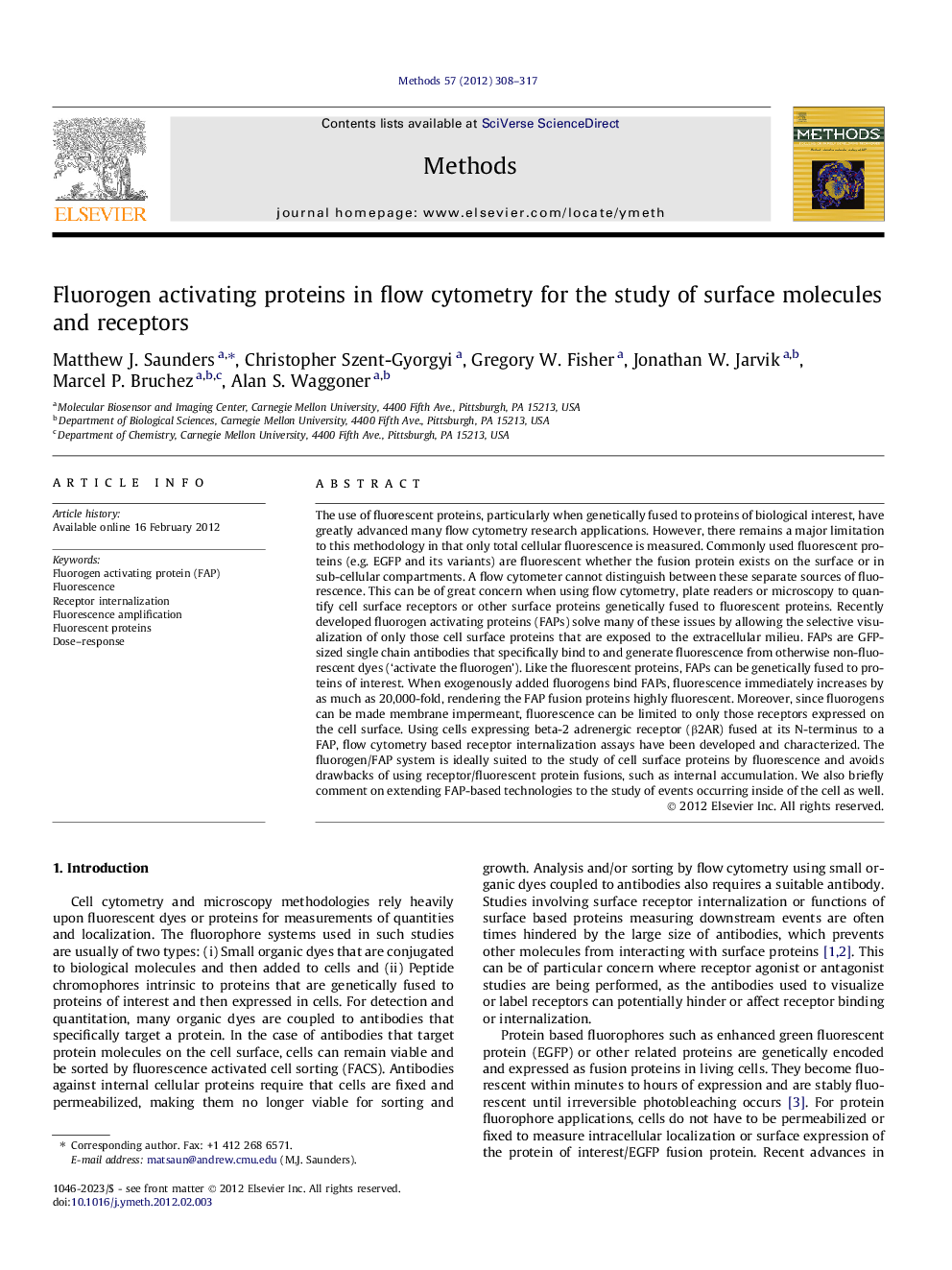| کد مقاله | کد نشریه | سال انتشار | مقاله انگلیسی | نسخه تمام متن |
|---|---|---|---|---|
| 1993473 | 1064670 | 2012 | 10 صفحه PDF | دانلود رایگان |

The use of fluorescent proteins, particularly when genetically fused to proteins of biological interest, have greatly advanced many flow cytometry research applications. However, there remains a major limitation to this methodology in that only total cellular fluorescence is measured. Commonly used fluorescent proteins (e.g. EGFP and its variants) are fluorescent whether the fusion protein exists on the surface or in sub-cellular compartments. A flow cytometer cannot distinguish between these separate sources of fluorescence. This can be of great concern when using flow cytometry, plate readers or microscopy to quantify cell surface receptors or other surface proteins genetically fused to fluorescent proteins. Recently developed fluorogen activating proteins (FAPs) solve many of these issues by allowing the selective visualization of only those cell surface proteins that are exposed to the extracellular milieu. FAPs are GFP-sized single chain antibodies that specifically bind to and generate fluorescence from otherwise non-fluorescent dyes (‘activate the fluorogen’). Like the fluorescent proteins, FAPs can be genetically fused to proteins of interest. When exogenously added fluorogens bind FAPs, fluorescence immediately increases by as much as 20,000-fold, rendering the FAP fusion proteins highly fluorescent. Moreover, since fluorogens can be made membrane impermeant, fluorescence can be limited to only those receptors expressed on the cell surface. Using cells expressing beta-2 adrenergic receptor (β2AR) fused at its N-terminus to a FAP, flow cytometry based receptor internalization assays have been developed and characterized. The fluorogen/FAP system is ideally suited to the study of cell surface proteins by fluorescence and avoids drawbacks of using receptor/fluorescent protein fusions, such as internal accumulation. We also briefly comment on extending FAP-based technologies to the study of events occurring inside of the cell as well.
► FAPs are proteins that bind small molecule fluorogens to activate fluorescence.
► FAPs can be used as fusion proteins in a similar manner as GFP.
► FAP/fluorogen excitation and emission are well suited to current flow cytometers.
► Impermeant fluorogens will label FAPs at the cell surface but not in the cytoplasm.
► FAPs can measure dose–responses of receptor agonists and antagonists.
Journal: Methods - Volume 57, Issue 3, July 2012, Pages 308–317